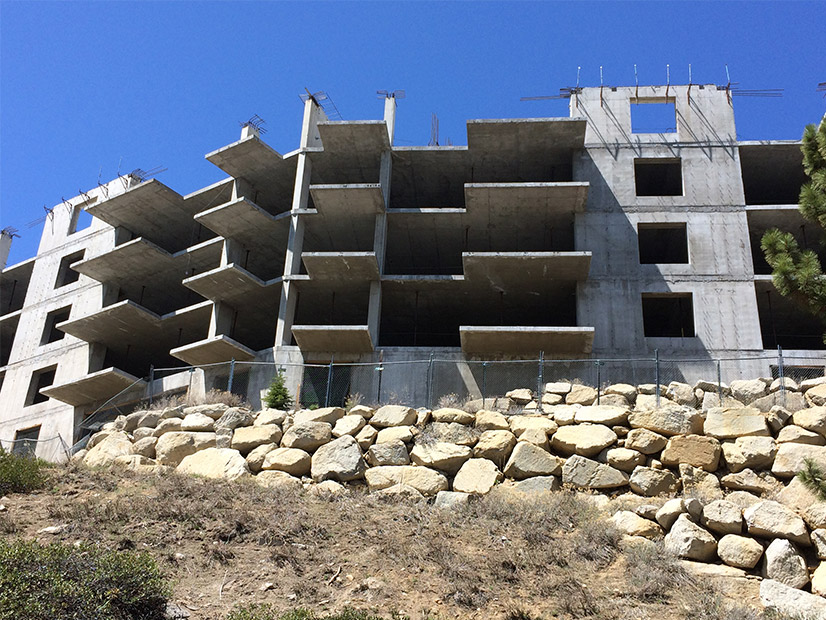With growing recognition of the contribution concrete makes to greenhouse gas emissions, a California lawmaker has proposed a bill that calls for carbon neutrality in the state’s cement and concrete industry by 2045.
Senate Bill 596, by Sen. Josh Becker (D), would also set an interim target for the industry of reducing GHG emissions by 40% by 2030, compared to 2019 levels. The bill would leave it to the California Air Resources Board (CARB) to devise a strategy for reaching the targets.
The Senate Environmental Quality Committee passed the bill by a 5-1 vote on Friday. It has been referred to the Appropriations Committee.
A second concrete-related bill is also moving forward in the state legislature. Assembly Bill 1365 was introduced by Assemblyman Rob Bonta (D) in February. Bonta has since been named state attorney general.
AB 1365 would add concrete to the Buy Clean California program, which sets environmental standards for four construction materials used in state building projects: structural steel, steel rebar, flat glass and mineral wool-board insulation.
The bill would require concrete producers bidding on a state public works project to report the full carbon footprint of their mixes, and it would create incentives for lower-carbon products.
The Assembly Committee on Accountability and Administrative Review passed the bill last month and referred it to the Committee on Natural Resources.
Widely Used Material
Concrete is the most widely used building material in the world. But the production of cement, a key component of concrete, accounts for about 8% of CO2 emissions worldwide, according to a 2018 report from Chatham House, a London-based international affairs think tank. In California, cement production accounted for 1.8% of GHG emissions in 2017, according to a report from CARB.
In the U.S., California is the second-largest producer of cement, behind Texas. And cement production in California is expected to increase by as much as 42% during the next 20 years in response to growth in the state’s population and economy, according to an analysis of SB 596.
“Since we’re unlikely to stop using concrete, we need to figure out a way to make it with far less impact on our climate,” Becker said during Friday’s committee hearing on SB 596.
Much of the GHG emissions from cement manufacturing comes from the production of clinker, an intermediate product made by heating limestone and clay to about 2,700 degrees Fahrenheit. About 40% of the GHG emissions during cement production is from the energy used in the heating process. Another 60% comes from the chemical reaction that occurs when limestone is heated, according to the bill analysis.
While technologies have been developed for reducing emissions from concrete and cement, their use has been limited, Becker said.
“These technologies have usually not been deployed at scale, because there has not been enough demand for low-carbon products from customers, and there have not been enough regulatory incentives to drive change,” he said.
Industry Weighs In
The cement and concrete industry has recognized the need to reduce its carbon emissions.
In August, the Global Cement and Concrete Association announced a climate ambition statement, in which members expressed their commitment to reduce the carbon footprint of their operations and set a goal of carbon neutrality by 2050.
The California Nevada Cement Association (CNCA) said in a news release that the industry supports California’s GHG reduction goals and is committed to achieving carbon neutrality.
CNCA released a report in March that details how carbon neutrality could be achieved. To do so, CNCA said, barriers including statutory and regulatory hurdles, market acceptance and cost challenges need to be addressed.
During Friday’s committee hearing on SB 596, Bruce Magnani, a consultant speaking on behalf of CNCA, said the group appreciates the “open and collaborative discussions” it has had with the bill sponsors. Magnani said CNCA didn’t have a position on the bill.
“We believe there is a solution to be reached that will lower carbon emissions in cement manufacturing and will help achieve the state’s carbon goals and assist the industry in reaching its commitment to become net neutral by 2045,” he said.
SB 596 would require CARB to develop a carbon-reduction strategy for the cement and concrete industry by the end of 2022.
The bill says that in designing the strategy, CARB should assess the GHG intensity of concrete used in the state in 2019 to use as a baseline and devise ways to track lifecycle GHG emissions from cement and concrete.
The bill asks CARB to evaluate measures such as a low-carbon product standard for concrete or cement and look at ways to encourage the use of low-carbon concrete.
SB 596 is sponsored by the Natural Resources Defense Council.
More Scrutiny for Concrete
AB 1365 would build on the Buy Clean California Act, adopted in 2017 as AB 262. That bill also was authored by Bonta.
Under the act, the state Department of General Services sets a maximum acceptable global warming potential for each covered category of building materials used in public works projects. A successful project bidder must submit an Environmental Product Declaration (EPD) for those building materials. A legislative analysis of AB 1365 described EPDs as a “nutrition label” of sorts for the environmental impacts of different building materials.
AB 1365 would add concrete to the list of materials covered by the Buy Clean California program. It would also create an incentive for using cleaner concrete.
In commenting on AB 1365, Bonta said early versions of his 2017 bill included concrete, but the final bill did not.
“Accounting tools such as EPDs were not widely in use at the time, lower carbon cement formulations had not achieved market acceptance, and outdated procurement specifications limited options to reduce the cement content in concrete without increasing cost or sacrificing performance,” Bonta said in a written comment included in the legislative analysis.





